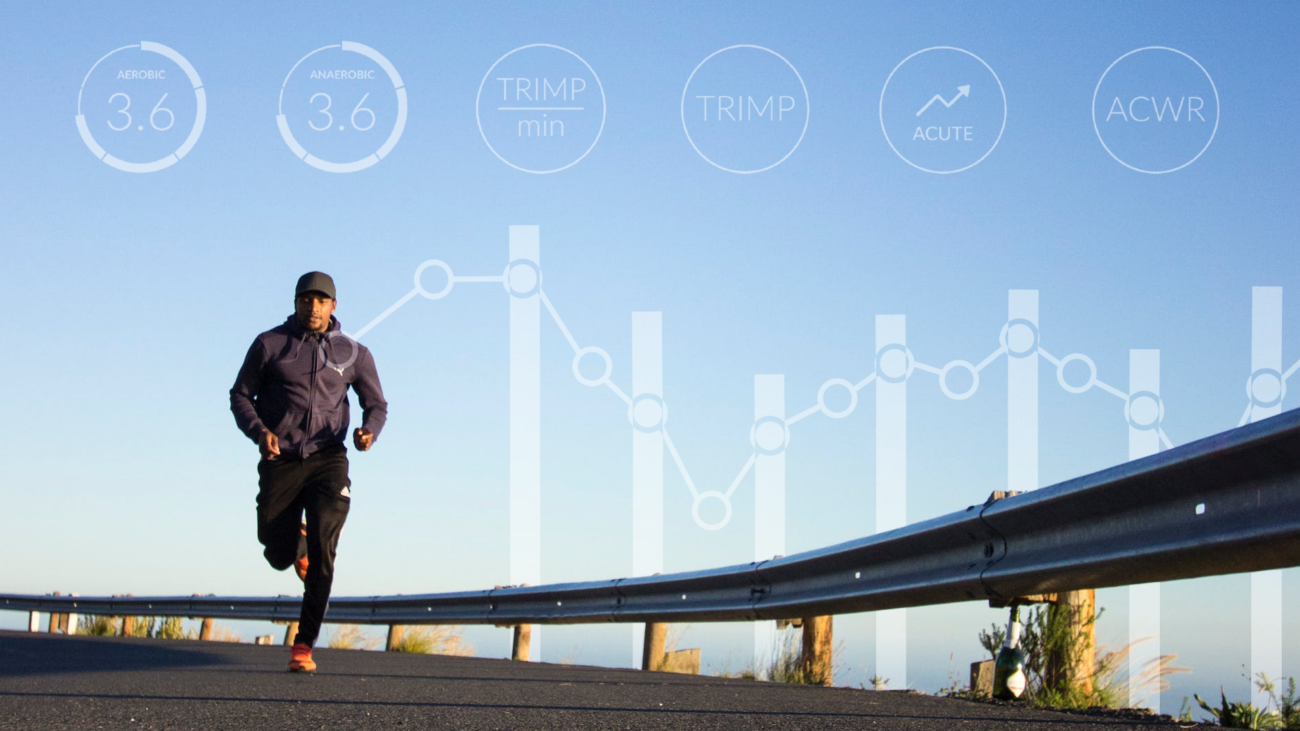
Heart rate data forms the basis of multiple performance metrics used in professional sports. These metrics support decision-making and facilitate effective athlete and team performance management.
Key metrics that rely on accurate heat rate measurements include Training Impulse (TRIMP) which is used to quantify training load, Aerobic Training Effect which describes the impact of a training session on the development of VO2max and aerobic endurance capabilities, Anaerobic Training Effect which describes repeat sprint and high intensity training, and EPOC.
EPOC stands for Excess Post-Exercise Oxygen Consumption, and it reflects how far the body’s oxygen uptake is elevated from resting levels due to recovery needs after exercise.

Want to learn more about the metrics? Download our free athlete training load guide here.
The Importance of Accurate Data
Data is only useful if it’s accurate, but how do you know that you can trust the data you’re being given?
Firstbeat Sports sensors have been proven to provide superior accuracy over data from sensors in heart rate vests.
In a 2021 scientific study, researchers compared the accuracy of a chest strap and a vest against a gold standard reference (clinical ECG monitor) for HR and HRV monitoring and analyzed the impact of their accuracy into accumulated physiological metrics TRIMP, EPOC, and EE used by coaches and athletes for training monitoring and planning.
Based on the results, the study concluded the accuracy of HR data and HR-derived physiological metrics collected with the chest strap to be superior to the HR vest when using clinical-grade HR monitoring as a reference.
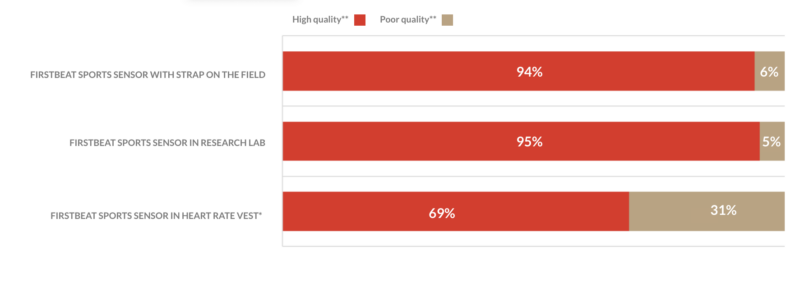
What Does this Difference Look Like in Reality?
Since the 2021 study, the Firstbeat data accuracy has improved even further, with a measurement error rate of just 4% compared to 6% previously.
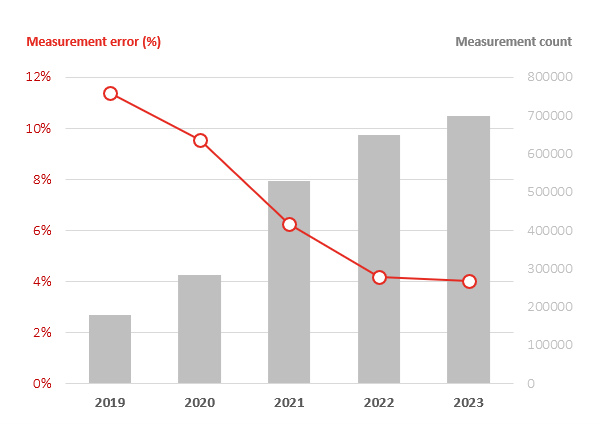
But what does this mean in reality? How do these differences in accuracy show up in the data results that coaches rely upon to support their decision-making?
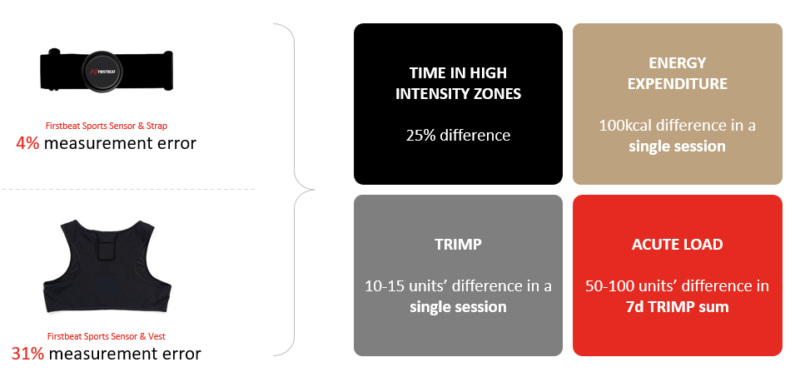
A 4% versus a 31% measurement error could mean a 25% difference in heart rate data showing time spent in high-intensity zones, 100kcal difference in energy expenditure in a single session, 10-15 units difference in TRIMP in a single session, and 50-100 units difference in the seven-day TRIMP sum.
When you are working with elite athletes, even a 1% difference matters when it comes to getting results.
Data Transparency Matters
Here at Firstbeat, we think that being transparent about data error margins with clients is important for several reasons, and we are proud to be the only system for teams that communicates the quality of data openly with our users.
We believe that we have an ethical responsibility to be transparent about the limitations and uncertainties in our data. Transparency builds trust. When you openly communicate the error margins associated with your data, clients are more likely to trust your organization.
Coaches rely on accurate and reliable data to make informed decisions. Providing information about error margins helps clients understand the limitations of the data and empowers them to make decisions with a clear understanding of the potential uncertainties.
Final Thoughts for Coaches – Consider What The Technology Was Designed For
Whilst a GPS vest is easy to put on when worn on top of a jersey, for heart rate data, the vest should be custom fit and worn next to the skin. When used next to the skin, vests need to be washed after every single practice.
Vests become worn out quickly, and it’s important to remember their primary design intent, which, unlike Firstbeat, is for purposes other than heart rate detection.
Even with a meticulous setup, the vest is prone to generating movement-based artifacts, potentially impacting data accuracy.
By choosing Firstbeat, coaches can confidently access high-quality data, minimizing artifacts and empowering them to make confident decisions.
Arrange a free demo of the Firstbeat athlete performance management platform for you and your coaching staff here.
If you liked this article, you should subscribe to our newsletter.
You might also be interested in

Make Confident Coaching Decisions with Firstbeat’s Weekly Reporting
In this article, we’ll introduce the Weekly Reporting feature from Firstbeat Sports. As a coach, you can use this feature to: See key training load data over a 7-day period…

Investing in Long-Term Player Development with Finnish Ice Hockey Champions Tappara
“I think it’s important to develop the players all the way from a young age progressing towards the elite league. We have a strength and conditioning team that involves coaches from U18 and U20. We meet on a regular basis.”
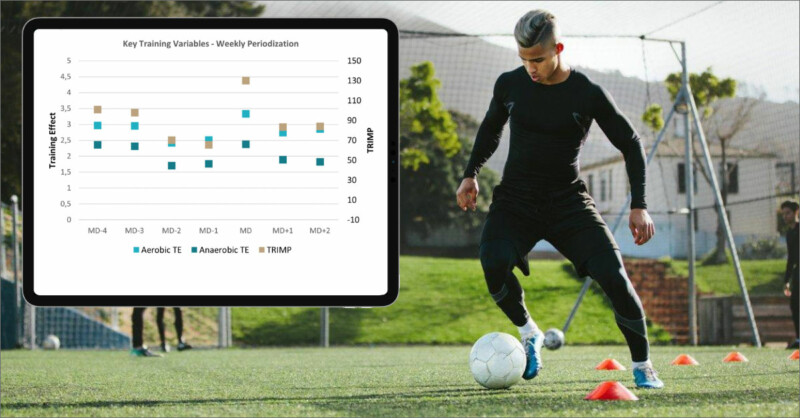
Micro-Cycle Periodization in Soccer – How to Structure the Game Week
Preparing for each game is perhaps one of the most important considerations when coaches are planning their weekly training schedule, as they aim to arrive at game day with players as fresh as possible.
